Homemade Peanut Butter
Updated Oct 24, 2024
Mix your own homemade peanut butter with just two ingredients and a blender/food processor with this easy step-by-step tutorial with tips!
This post may contain affiliate links. Please read our disclosure policy.
Making peanut butter at home is actually super easy and saves you from eating all the extras that come with most store-bought versions! All you need is peanuts and a food processor, or a powerful blender to make homemade PB!
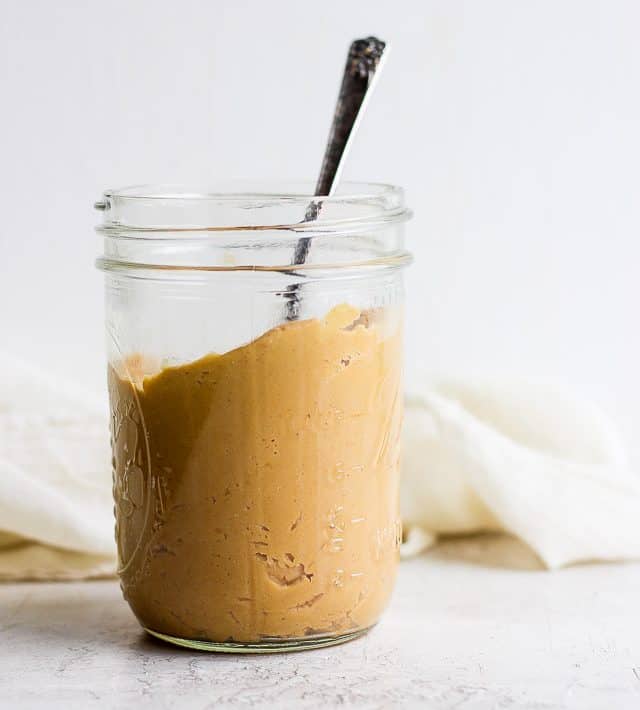
Table of contents
Recipe At a Glance
Cuisine Inspiration: American
Primary Cooking Method: No-Cook
Dietary Info: Gluten-free, Dairy-free, Vegan (if honey is omitted)
Key Flavor: Nutty and lightly sweet
Skill Level: Easy
Why This is So Good
- Customizable sweetness: You can easily adjust the flavor by adding honey (or leaving it out for a more savory option).
- Super simple: Just toss the peanuts in a food processor, and you’re done in minutes – no cooking required!
- Fresh and natural: No added preservatives or oils – it’s all about that pure peanut flavor.
Ingredients to Make Homemade Peanut Butter
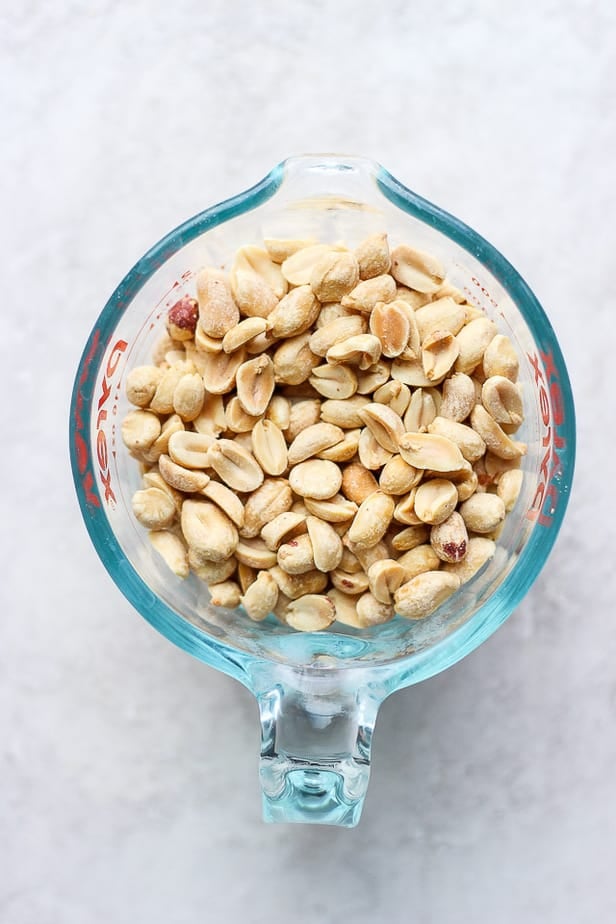
- Shelled peanuts that are dry roasted and unsalted. Yes, you’ll add salt later, but if you use salted peanuts, you will lose the ability to control the amount, and the peanut butter could be too salty.
- Salt: This is where you get that perfect balance of sweet and savory. A pinch of salt really brings out the flavor of the peanuts, making the peanut butter even more addictive.
- Honey (Optional): If you like your peanut butter on the sweeter side, adding a little honey does the trick. It adds just the right amount of sweetness without being too much. And if you want to keep things simple (or vegan), you can totally leave it out.
Recipe Substitutions & Additions
- Use a different sweetener Maple Syrup or Agave: Customize your sweetness level.
- Add Spices: Cinnamon or a wintery pumpkin pie spice mix would be nice. If your palate runs savory, try chili powder. The result would be fantastic in peanut noodles.
- Add Cocoa Powder: Popular Nutella is essentially hazelnuts and cocoa powder, so think about that!
- Use Other Nuts: You can make almond butter, cashew butter and even sunflower seeds work well as nut and seed butters.
How to Make Peanut Butter from Scratch
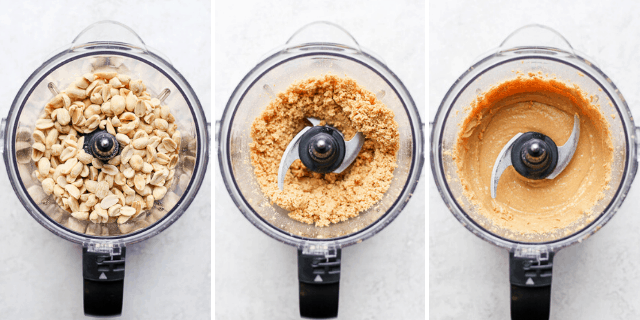
- Place the roasted peanuts in a food processor.
- Turn the food processor on and let it run for about five minutes, stopping the food processor to scrape down the sides with a spatula as necessary.
- The peanuts go through three phases: first, they will crumble, then they form a dry ball, and eventually, they start to look like spreadable peanut butter. Be patient, the creamy stage can take five minutes or longer.
Finally, once the consistency is creamy and there are no more crumbs, you can add the honey and salt. Turn the food processor on again and blend for 20-30 seconds to incorporate.

This homemade peanut butter recipe yields about 1 ½ cups of peanut butter. Transfer to a glass jar and store in the fridge or in the pantry.

Tips for Making the Best Homemade Peanut Butter
- Roast the nuts. Even if you buy dry-roasted nuts, you can roast them for an additional 5 minutes. A little extra roasting helps release the oils for a creamier blend.
- Do not rush the blending time in the food processor. When the mixture looks blended enough, it may seem like your job is done. But keep going until it looks spreadable. This is when the mix goes from dry to creamy.
- Taste the peanut butter to guide the process. Depending on your blender or food processor, your peanut butter may take shorter or longer to reach the creamy stage. Your eyes and taste buds are a better guide than the timer.
- Add neutral oil if it looks too dry. A few teaspoons of neutral oil can be added if your homemade peanut butter looks too dry.
Recipes with peanut butter
- Chocolate Peanut Butter Bars (No Bake)
- Gluten Free Peanut Butter Cookies
- 3 Ingredient Peanut Butter Cookies
- Peanut Butter Ice Cream Pie
- Peanut Butter Banana Smoothie
- Peanut Butter Yogurt Dip
- Peanut Butter Banana Baked Oatmeal
- Chocolate Peanut Butter Banana Bread
- Chocolate Peanut Butter Dip
- West African Beef Kabobs (Suya)
- West African Peanut Soup
- Peanut Butter Dip
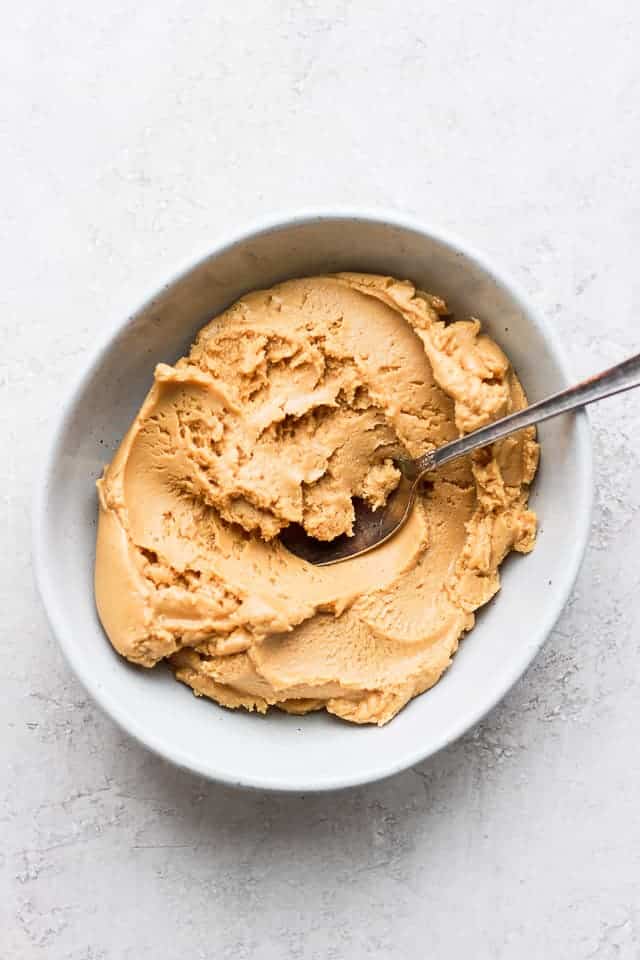
Frequently asked questions
This will depend on your food processor. However, it’s likely that it will still have a little more texture, closer to the “natural” supermarket brands.
To make chunky peanut butter, take out and set aside ¼ cup or so of the peanuts at the crumbly stage. Continue to process the rest of the nuts to the creamy stage. Add the crumbles in after the honey and salt and process briefly to distribute evenly.
Stilltasty.com tells us that unrefrigerated homemade peanut butter will last a month. Refrigerated it will be good for six months.
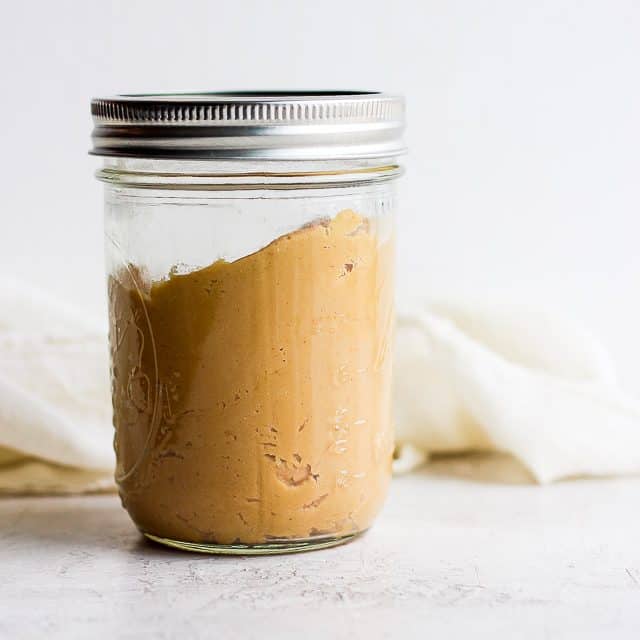
DIY peanut butter is a super-fun project for kids. Especially since it almost seems like magic. Try making your own version of this pantry staple.
For more cooking resources, check out:
- How to Make Oatmeal
- How to Cut an Avocado
- How to Cook Dry Chickpeas
- How to Cut a Head of Lettuce
- How to Cut Cauliflower into Florets
- How To Make Oat Flour
- How To Cut a Mango
If you’ve found this cooking resource for Homemade Peanut Butter helpful or if you’ve tried any recipe on Feel Good Foodie, then don’t forget to rate the recipe and leave me a comment below! I would love to hear about your experience with this technique. And if you snapped some shots of it, share it with me on Instagram so I can repost on my stories!

Homemade Peanut Butter
Instructions
- Place roasted peanuts in a food processor. Turn the food processor on and let it run on high for about 5 minutes, scraping down the sides with a spatula as necessary. The peanuts will start to crumble, then form into a dry ball and eventually start to look like spreadable peanut butter.
- Once the consistency is creamy and there are no more crumbs, you can add the salt and honey, if using. Turn the food processor on again and blend for 20-30 seconds to incorporate. Yields about 1 ½ cups peanut butter.
- Transfer to a glass jar, and store in the fridge or in the pantry.
Notes
Nutrition
Nutrition information provided is an estimate. It will vary based on cooking method and specific ingredients used.






Comments
When making homemade peanut butter do you leave the shell on the peanuts or deshell before processing.
No, you don’t. In this recipe, use shelled peanuts that are dry roasted and unsalted. Hope that helps!